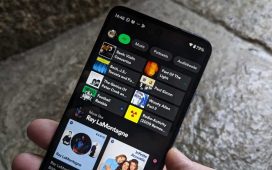Developer NetherRealms has a history of pushing the envelope for cinematic visuals in fighting games – and Mortal Kombat 11 is no exception, delivering a spectacular experience on all consoles. The physically-based lighting and facial capture tech of Injustice 2 returns, this time put to work with some gruesome fatalities and bone-crunching close-ups. PS4 and Xbox One machines of all flavours deliver an accomplished presentation, but with this latest franchise entry, a new handheld contender enters the fray – and MK11 on Switch delivers a surprisingly strong conversion.
As you may expect, NetherRealms’ latest achieves good image quality on base consoles with the expected resolution boosts in place for their enhanced equivalents – but it’s the nature of the Switch port that’s perhaps most interesting. Conversions such as Warframe, Wolfenstein: The New Colossus and Doom 2016 have relied on cutting frame-rate as well as visual fidelity to get the job done – 60fps experiences pared back to 30fps on Switch. Mortal Kombat 11 is impressive because although the foundation Unreal Engine tech is enabled for Nintendo’s hybrid, the game wouldn’t be the same if it didn’t run at the required 60fps. Somehow, this port manages to get the job done.
There are some obvious concessions: the PS4 and Xbox One versions all weigh in with a 40GB footprint, wheres the Switch download is 22.6GB. Most of that can be owed to the cut in texture map resolution and the quality of pre-rendered videos. Still, it’s a remarkable feat of engineering to see this version at all. As with Unreal Engine games in the vein of Rocket League or Fortnite, this is mechanically the same experience, but arguably, it’s the closest port of a PS4 or Xbox One-level game to Nintendo’s hybrid console to date – Cuphead apart.
In bringing MK11 to Switch, the scalability of the original code is obviously essential and satellite developer Shiver Entertainment has no doubt benefited from the inclusion of dynamic resolution scaling to give the console’s GPU wiggle room. DRS is indeed used on Switch, but it’s a key part of the other console versions too. PS4 sticks doggedly to 1080p, but Xbox One scales from sub-900p resolutions to 1728×972 in gameplay, rising to 1080p in the 30fps cutscenes.
A video analysis of Mortal Kombat 11 with a special focus on the impressive Switch port.
Meanwhile, dynamic res is also in play on the enhanced machines. Similar to Injustice 2, Pro spends much of its time at 2240×1260 in the thick of the action, rising to 1440p. Meanwhile, the 30fps cutscenes hit a pixel count in the region 1800p. Not surprisingly, Xbox One X gets a further boost over this – the cinematics hit native 4K, while gameplay dynamically adjusts between values in the region of 2880×1620 to 1800p.
The screenshot gallery below shows the visual differences between base and enhanced hardware, but they’re of little consequence, amounting to slightly higher quality textures in some areas, and a minor adjustment in ambient occlusion – though motion blur features noticeably fewer samples on the vanilla machines. Suffice to say that the best console experience this time around is delivered by Xbox One X – but all versions deliver smooth 60fps action, and properly frame-paced 30fps cinematics, x-rays and fatalities.
But it’s the Switch port that is the main event. Shiver Entertainment needs to retain as much of the core experience as possible, while also handing in decent visuals. The dynamic resolution of the other console builds is used far more aggressively here. Running docked, I logged pixel counts between 960×540 and 1280×720, while resolution takes a more profound hit in handheld mode, with a range of resolutions between 854×480 and 682×384. For reference, Mortal Kombat 9 on PS Vita rendered at 630×384, but obviously with a much older, less complex iteration of the engine.























Shiver takes the axe to MK11’s visual feature set in many regards. The developers have mentioned culling geometry, but that’s actually one of the smaller cuts I noticed. Texture assets are of a lower resolution all round while volumetric lighting and ambient occlusion are also pruned back in their overall visibility. GPU-driven particle effects and shader complexity are reduced, while motion blur is completely removed. Dynamic shadows remain during gameplay, but again, they’re of a lower resolution overall. Meanwhile, transparent textures are also rather grainy, especially so in handheld mode. Specular elements see a radical downgrade too, producing a flatter look on many surfaces. Other cutbacks include the character select screen models reduced from 3D renders to 2D art – but if this reduces loading times, that’s fine by me.
However, for the most part, MK11 on Switch does deliver that essential 60 frames per second action. Certain character and environment combinations can see a drop to performance, but most other fights play out flawlessly at full frame-rate. In portable mode, those same face-offs that cause issues when docked can result in more pronounced dips down to 45fps territory. But again, for the majority of play, we’re looking at a smooth level of performance. Cutscenes are still delivered at 30fps on Switch. The bad news here is frame-pacing isn’t quite right; combined with the judder from further frame-rate drops, this area could use a little more work.
It’s easier to veer towards the negative points, but the fact is it works. Mortal Kombat 11 delivers a great experience on all systems. PlayStation 4 offers more clarity over Xbox One, while Microsoft’s enhanced machine achieves likewise up against PS4 Pro – but every version locks gameplay to 60fps and looks impressive given their respective hardware. The Switch version is a fascinating experiment on its own terms. Yes, you can get a better experience on the big screen – but as a means to practise on the go this is surprisingly effective. Despite a big cut to resolution, the game delivers a great handheld experience – and once again, in this sense, it’s unique amongst the pack.














